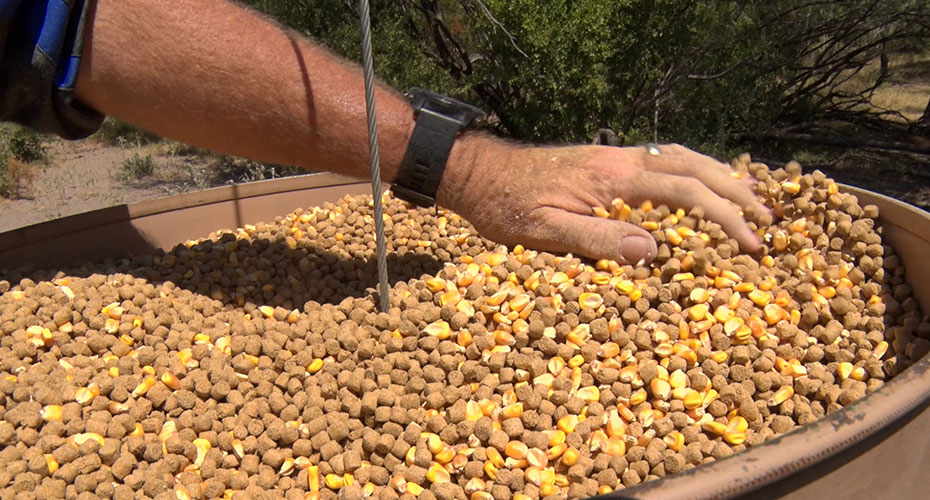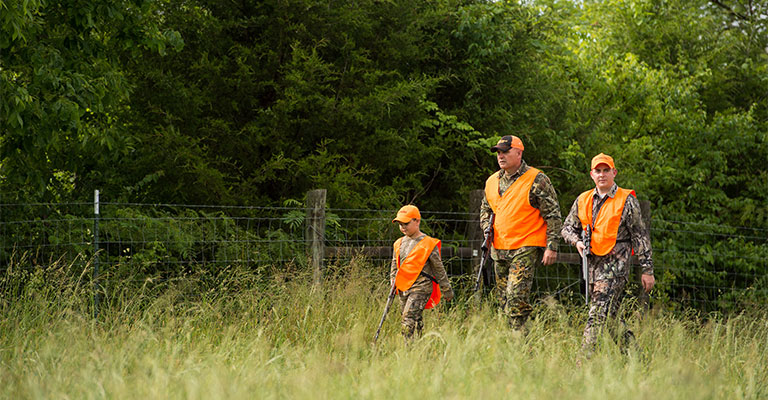Frequently Asked Questions
Gain insights into feeding deer and wildlife with our FAQs.
-
How many feeders do I need? Is it by land size, or by deer herd density?
The best way is to go by herd size. We recommend 1 feeding station for every 25 head of deer, or if density is low, at least one feeder for every 400 acres. Research has shown the more feeding stations you can make available, the more deer will utilize supplemental feed.
-
Where is the best place to put feeders on my land? Near water? By bedding areas? By food plots?
Deer will generally do best if feeders are placed in transition areas, such as travel corridors or along edges where there is a transition in habitat.
-
How much feed will a deer eat in a day?
It depends on range and habitat conditions, but deer will typically consume 0.75% -1.5% body weight of Record Rack when it is provided free choice. They will typically consume around 2.5%-3% of their bodyweight if they are being fed a complete diet, such as in a fenced pen.
-
What type of feed can go in the different kinds of feeders?
Pelleted protein feeds are best fed through gravity flow free choice feeders. Golden Deer Nuggets and corn are best fed as attractants through timed spincast feeders.
-
What is the best product to get the deer started on a feeder?
A spincast feeder filled with a mixture of corn and Golden Deer Nuggets is a great way to get deer in close proximity to a new protein feeder.
Once they are adjusted to the feeder itself, Record Rack protein supplements contain ingredients that deer can smell, and are designed to be the most palatable deer protein supplement available. You do not need to mix with corn or other attractants to get deer to eat it.
-
How long should I expect it to take to get the deer to start coming regularly to the feeder?
This depends on deer density, feeder location, pressure and other environmental factors, however typically it will take 2-3 weeks before deer become comfortable at a new feed site.
-
I’ve been feeding, and the deer suddenly stopped coming/eating. What might cause that?
This is most likely due a change in the environment, or an improvement in native range conditions. When large mast crops such as acorns, wild berries, fruit or mesquite beans become available deer will also back off on feed.
Hunting pressure or the presence of a native predator such as bobcat, mountain lions or bears can also cause deer to decrease feeder visitation frequency.
-
If I plant food plots, do I still need to provide feed? Or if I provide feed, do I need to plant food plots?
With deer, it is all about diversity. Deer are concentrate selectors which means the more variety they have in their diet, the better they will do. We recommend utilizing both feed and food plots in your management program, as deer will utilize both in conjunction with each other and typically benefit more from both vs one alone.
-
If I start feeding, and then stop someday, will I have harmed the deer since I’m not feeding anymore?
We recommend feeding year round to ensure deer utilize supplemental feed as a significant portion of their diet. Feed is not a replacement for good habitat, but you will see better results if fed year round. Strategic supplemental feeding is beneficial as well though.
-
Why do you have so many types of feed? What are they all for, or why would I pick one over the other?
We have several different rations that are designed to complement different habitat types and conditions. We also have rations that are designed as a free range supplement to native habitat, while others are complete diets designed make 100% of a deer’s diet.
The best way to find out which best fits your particular operation will be to contact us through our website or get in touch with your local rep.
-
Do I need to put out mineral blocks or loose mineral if I’m providing feed?
If you are providing free choice Record Rack protein pellets, you can still provide the Record Rack Mineral free choice, although deer will typically not consume it if free choice protein is available, due to them meeting their mineral requirement through the feed.
-
Do I need to put out salt blocks?
Salt is a good attractant and contains essential compounds that can help promote metabolic function. It will also help improve water intake, and the more water an animal will consume, the better off they will be. We recommend putting a salt block out at all permanent water sources.
-
Will moldy feed hurt the deer?
Do not feed molded feed to deer. Moldy feed can cause some digestive or reproductive issues if consumed, but deer will typically not consume molded feed.
If using feeders, it is a good idea to periodically thoroughly clean out the inside of the feeder to help prevent buildup of feed, which will in turn reduce the possibility of mold building up.
-
How does Record Rack use my personal information?
Record Rack processes your personal information in accordance with Cargill’s Privacy Policy.


